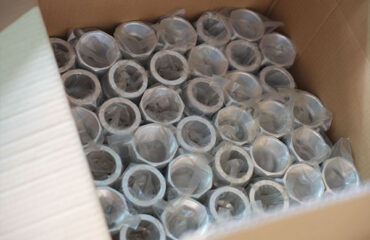Selecting the correct Camlock coupling type is only half the battle. Choosing the right material is equally critical for ensuring safety, longevity, and system integrity. The three most common materials are Stainless Steel, Aluminum, and Polypropylene. This guide will help you choose the best one for your application.
Why Material Selection Matters
The material of your Camlock coupling determines its:
-
Chemical Compatibility: Resistance to corrosion from fluids, cleaners, and ambient conditions.
-
Strength & Durability: Ability to withstand pressure, impact, and wear.
-
Temperature Resistance: Performance in high-temperature environments.
-
Cost: Initial investment and total cost of ownership.
Stainless Steel Camlock Couplings
Stainless Steel (typically 304 or 316) is the premium choice for demanding applications.
-
Pros:
-
Excellent Corrosion Resistance: Highly resistant to a vast range of chemicals, solvents, and corrosive environments. 316 SS offers superior resistance to chlorides and acids.
-
High Strength & Durability: Withstands high pressures, physical impact, and abrasion.
-
High-Temperature Rating: Suitable for processes involving steam or high-temperature fluids.
-
Hygienic & Easy to Clean: Ideal for food, beverage, pharmaceutical, and sanitary applications.
-
-
Cons:
-
Higher Cost: Significantly more expensive than aluminum or polypropylene.
-
Heavier: Adds more weight to the system.
-
-
Ideal For: Chemical processing, food & beverage, pharmaceuticals, saltwater environments, high-pressure/ high-temperature systems, and applications requiring stringent hygiene.
Aluminum Camlock Couplings
Aluminum is the most popular general-purpose material, offering a great balance of performance and cost.
-
Pros:
-
Lightweight: Easy to handle and reduces overall system weight.
-
Good Corrosion Resistance: Resists corrosion from weather, water, and petroleum-based products like diesel and oil.
-
Cost-Effective: Provides durability at a lower price point than stainless steel.
-
Conductive: Can be specified with grounding wires for transferring flammable fluids to prevent static discharge.
-
-
Cons:
-
Not for Corrosive Chemicals: Will corrode when exposed to strong acids, caustics, or chlorides.
-
Softer Material: More susceptible to thread damage and wear than stainless steel.
-
-
Ideal For: Fuel and oil transfer, agriculture (water, fertilizer), construction, and general-purpose industrial use with non-corrosive media.
Polypropylene Camlock Couplings
Polypropylene (PP) is a lightweight thermoplastic used for highly corrosive chemical applications on a budget.
-
Pros:
-
Superior Chemical Resistance: Excellent resistance to a wide range of highly corrosive acids, bases, and solvents at room temperature.
-
Lightweight: The lightest of the three materials.
-
Low Cost: The most economical option.
-
Non-Conductive: Does not conduct electricity.
-
-
Cons:
-
Low Temperature Rating: Cannot be used with hot fluids or steam; can become brittle in cold temperatures.
-
Low Strength: More prone to cracking under impact or stress.
-
Not for High Pressure: Has a much lower pressure rating than metal counterparts.
-
-
Ideal For: Transferring aggressive chemicals at low temperatures and pressures (e.g., in labs, water treatment, and specific chemical manufacturing), and where cost is a primary driver.
Material Selection Checklist
-
What fluid am I transferring? Check chemical compatibility charts.
-
What is the operating temperature? Rule out materials that can’t handle the heat (or cold).
-
What is the operating pressure? Ensure the material’s pressure rating exceeds your needs.
-
Is weight a concern? e.g., for overhead or handheld applications.
-
What is my budget? Balance upfront cost with expected lifespan.
Need Help Choosing the Right Material? Download our free chemical compatibility chart or speak with our technical team for personalized advice.

